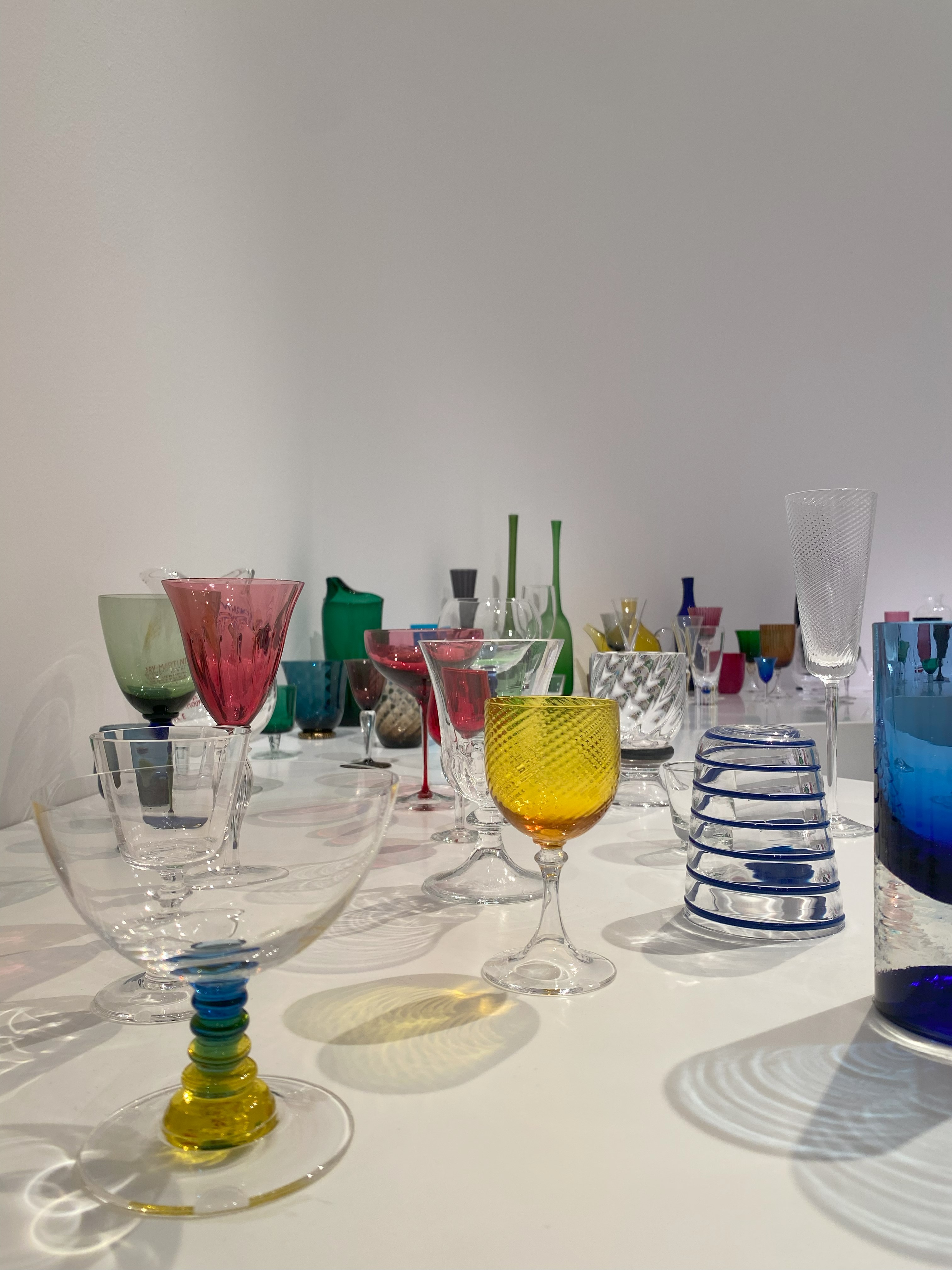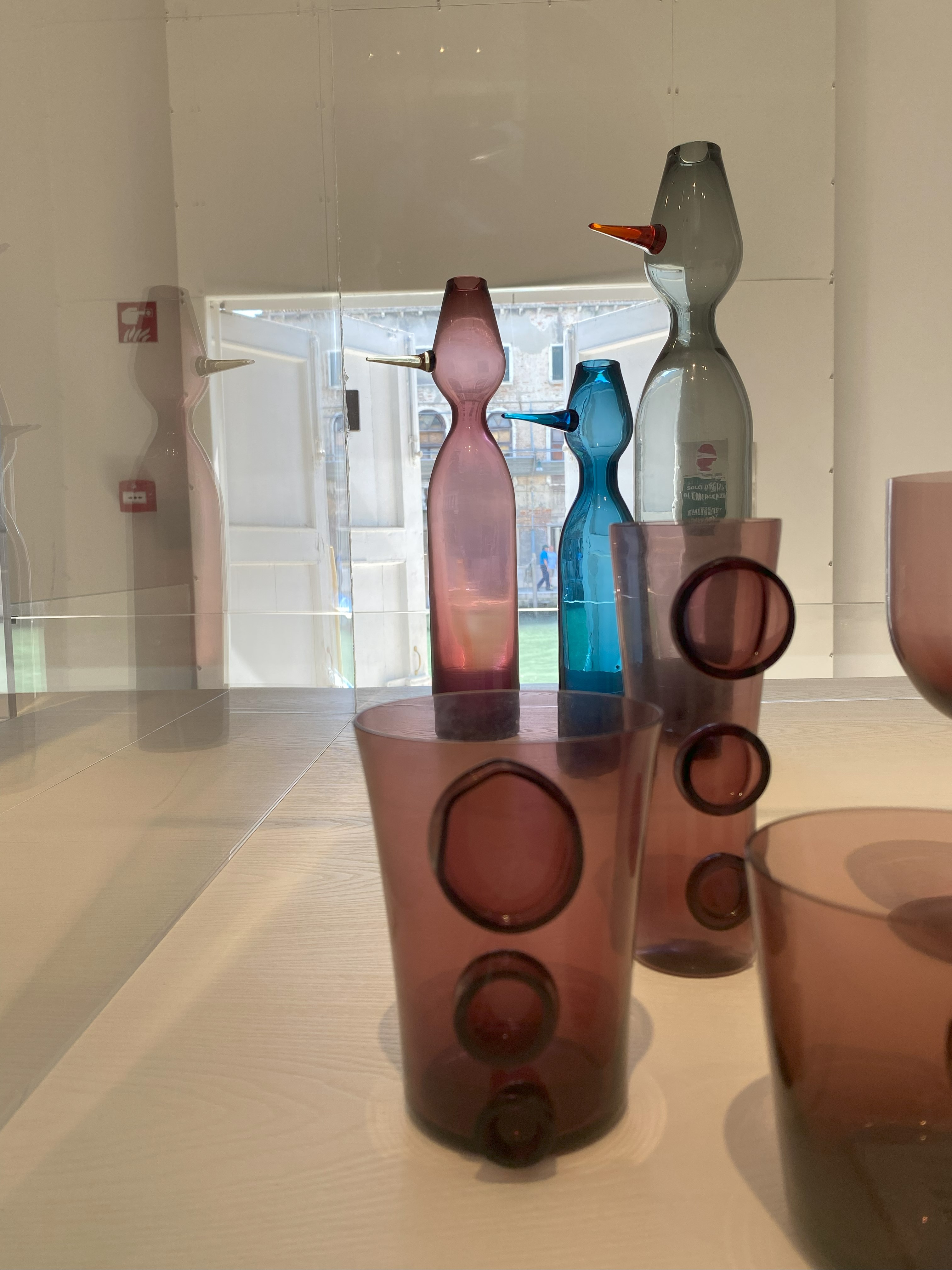The island of Murano is the place where centuries of artistic glass traditions are being kept alive, where today as yesterday glass has a fundamental role for its inhabitants, where it’s impossible not to notice how glass, in each of its different forms, pervades the calli. Indeed in the moment you get off the waterbus you’ll notice the large presence of family run shops that showcase and sell glass: necklaces, rings, bracelets, small statues and pearls. It’s this that makes you understand that Murano breathes and lives glass.
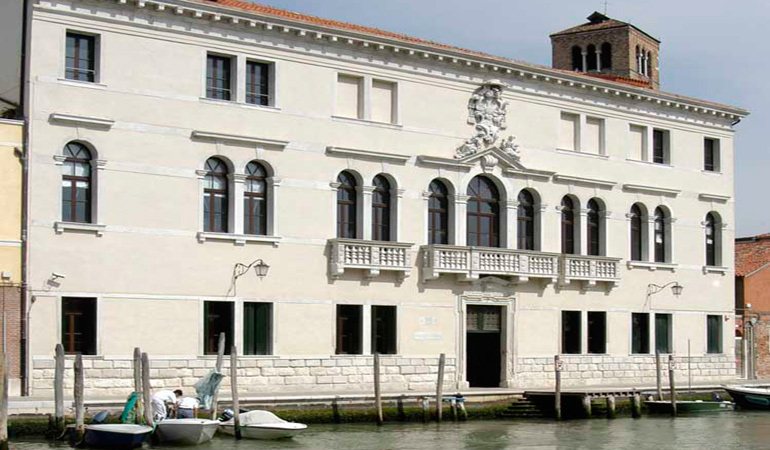
The Museo del Vetro, housed in an old patrician palace on the island, is strongly tied to the origin’s history of the muranese glass art which is a reality deeply interlaced with the various families that during the centuries helped Murano become a creative driving force for the old Republic.
It is for this reason that the museum chose to dedicate a space to these families or companies, that brought the island to the peak of being internationally recognized as the homeplace of artistic glass, despite the many difficulties that it had to face: economic crises, bohemian glass competition and worse of all the French and Austrian dominations that tried in any way possible to suppress this art.
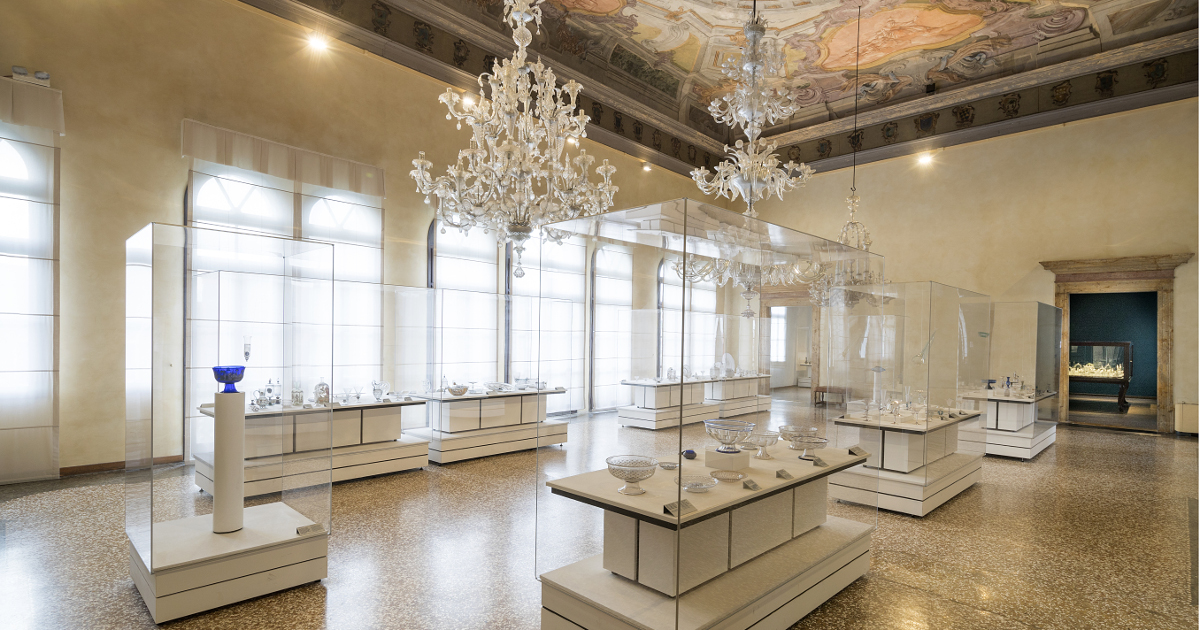
We went to discover the exhibition that is now being dedicated to NasonMoretti, since 2023 is the year that mark its centenary, a family-run company that for one hundred years has distinguished itself for two artistic direction’s key words: tradition and innovation. Each generation has took upon itself to preserve the heritage of Venetian glass making, combining customs and trends of each period of time but with a modern streak that has always characterized their works, a mix that resulted in over 25 thousand different models that highlight the importance of each work team that handmakes every piece with patience and passion, ensuring the quality that has been going on for a century.
Entering the exhibition it’s like diving inside 100 years of experience in artistic glass making, sure enough, as you walk in the first room you are going to be surrounded by many iconic works, all different kinds of tableware but especially glasses, that make the room look like an incredibly colourful wave.
It can be thought of as a sort of visual and impactful depiction of what a century of being a vanguard in artistic glass trends during all the époques and their different styles is like. It’s their know-how that made NasonMoretti a protagonist of many important tables, both royalty and State palaces all over the world.
As you continue your “walk through history” you are introduced to one, if not the most iconic piece of their collections: The Lidia cups created by Umberto Nason after the Second World War, when the brothers decided to change the design direction. Gone are the classic and traditional forms of table accessory in favour of setting a new standard in style. This line is innovative and unique because the bicoloured cups and glasses are made by using the new inverted cased glass technique that results in objects with a coloured inside and the milky white outside (usually it’s the opposite: white in the inside and colour on the outside).
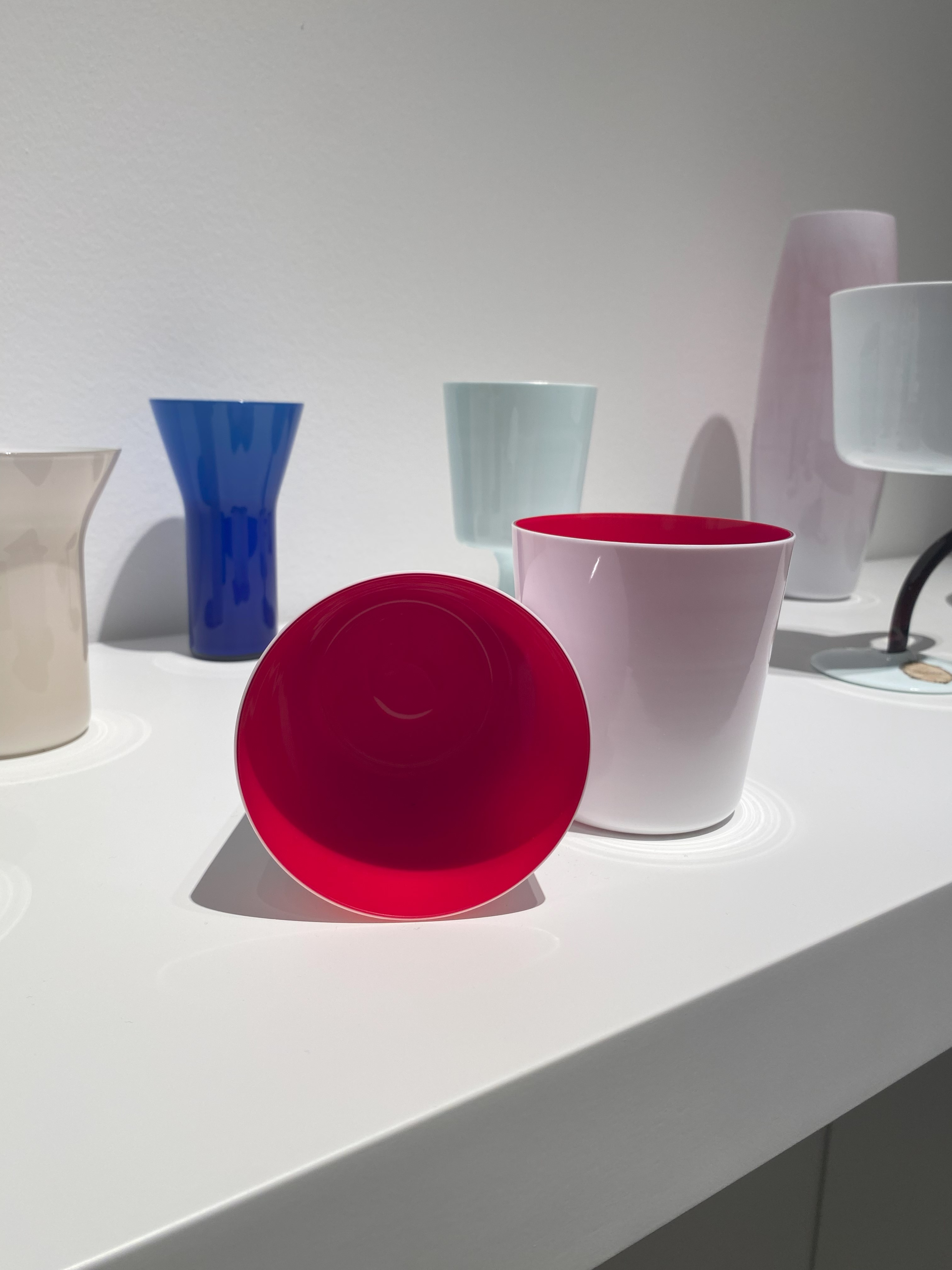
The Lidia Cups won the Golden Compass in 1955, a prestigious design prize recognized worldwide, thanks to its minimalistic form but especially for the originality of the inverted technique which creates a very strong contrast between the two sides of each cup. Nevertheless the cups have been declined in many different forms and they experimented a lot even with this emblematic design.

Other iconic pieces are the REP which is the official stem glass at the Quirinale’s tables (the Quirinale is the official residency of the Italian President of the Republic), or the Bellini mixer with the ice clip that is still being used in the famous Harry’s Bar.
You have to keep in mind that NasonMoretti is still one of the most blooming and authentic glassware companies on the island of Murano. Since its foundation, in 1923, the company has been dedicated to the art of tableware, blending traditional techniques with a modern twist, consistently reinventing themselves to meet contemporary demands and by working with new and young designers.

To show this continuity from past to contemporary the exhibition has a timeline which travels from the 20s, when the factory was founded, to the 80s showcasing pieces from each period of time and most curiously showing also the thought process behind the final product, behind each piece you will also see the drawings with the measurements and colour hypothesis, making you understand what happens before the actual glass blowing.
Changes are always necessary to improve and advance.
True to this mindset, NasonMoretti has never declined reshaping itself according to trends. Ever since the 90s the modern table has brought a more design oriented need for tableware. In the Nineties with the third generation the production aligns with this need for design and artistic pieces, as a result works from this time are now being shown in the MoMA of New York City, Corning Museum of Glass di Corning (NY) and in the Kunstmuseum of Dusseldorf.
The last decade of ‘900 is important also because they started to work with important luxury brands such as Valentino, Armani, Bottega Veneta, Hermés and Tiffany, establishing themselves as one of the most successful Venetian glass company.
By the time you’ve walked alongside the timeline you’ll notice that the exhibit is not just a “trip down memory lane”, but there is a big section dedicated to more recent projects, iconic glasses, vases, cups, that are still being made to this day, and various collaborations with contemporary artists and designers such as Fabio Bortolani, Maria Grazia Rosin, Marco Zito, Matteo Zorzenoni.
This part of the exhibit serves as a way of reminding visitors that NasonMoretti is still active and still in touch with modernity as a matter of fact every six months they design new projects with artists that they choose on their own accord basing themselves on modern trends. However this is not a new thing for NasonMoretti, since during its whole history, the company has always been able to combine tradition and innovation by collaborating with different artists, designers and some of the most renown and luxurious fashion and jewellery brands.
One thing that is impossible not to notice is the variety and intensity of the colours used. Keep in mind that Venice, as a Republic, has always been adamant about keeping the techniques of glass colouring (and the various recipes used for making the glass) a secret, going to the lengths of persecuting the ones that were suspected of sharing them. By adding this information as context it’s easier to understand that NasonMoretti’s innovation doesn’t stop at structures and designs, but it expands into the artistic glass’ millenary, secret and traditional recipes of the ways in which colours are made.
Even now the NasonMoretti’s mastri vetrai make things entirely handmade and they are the only ones in the world that can recreate about 30 shades of green, to name one of the most famous: The Soraya green inspired by the eyes of the Persian Princess that shares its name, and 9 different shades of blue. All the colours get their names either from nature, plants, flowers and trees to name a few they make: pesco which we would normally call liliac, verde lauro that takes its name from the colour of the laurel, pisello verde meaning pea green. Others’ names come from animals such as the grigio topo (mouse grey) or grigio talpa (grey mole). One of the reds, called rosso coppo, takes its name from the colours of the roof tiles and so on.
Their virtuosity with colours is also shown in a series called Bolle (bubbles), each bolla is different from the others because each one of them is a free-handmade piece realized with the technique called swinging blow that gives them different shapes and sizes, they are available in 14 colours such as airforce blue (verde avio), acid green (verde acido) and many more.
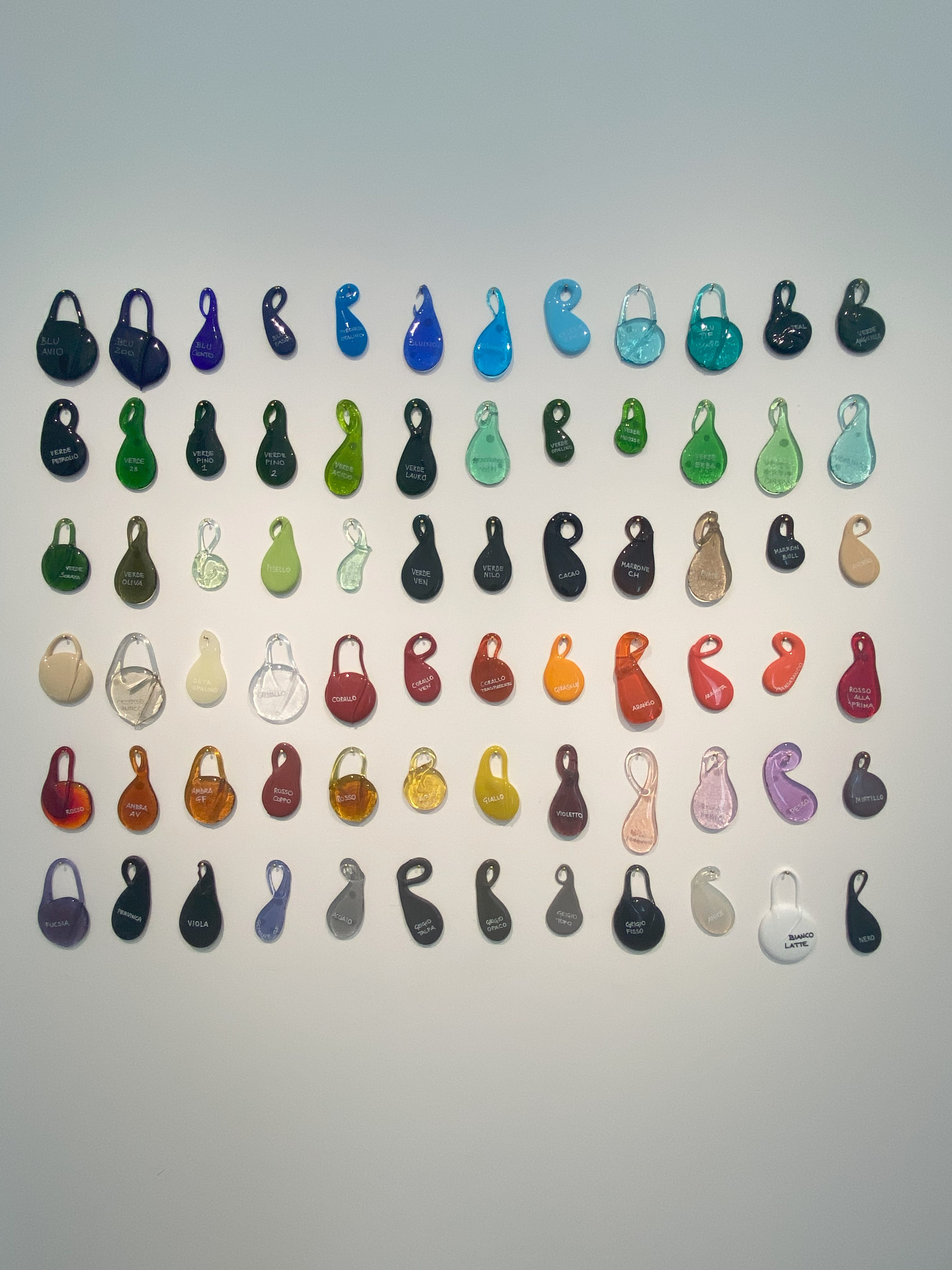
This talent is cleverly showcased on one of the walls where you can see hung the gocce (drops of glass) which are rough colour proofs used by the mastri vetrai as a way to test the intensity of the colours.

As the tides come and go, fashion and manners come and go with them, technologies and ways of doing things evolve… however, there are things that by choice remain faithful to tradition while not giving up on change. NasonMoretti in these hundred years has gone through years of different styles and fashions, while remaining faithful to the millenary traditions of glass art that has always and will always make Murano and its families a stronghold.
Professional pictures by QuantoBasta, courtesy of NasonMoretti. Other pictures by VDB Team.
We invite you to discover the world of NasonMoretti and all the content dedicated to the centenary on the IG account @nasonmoretti.


